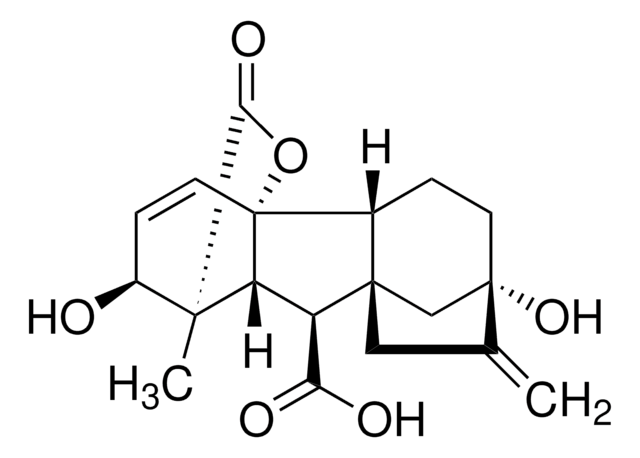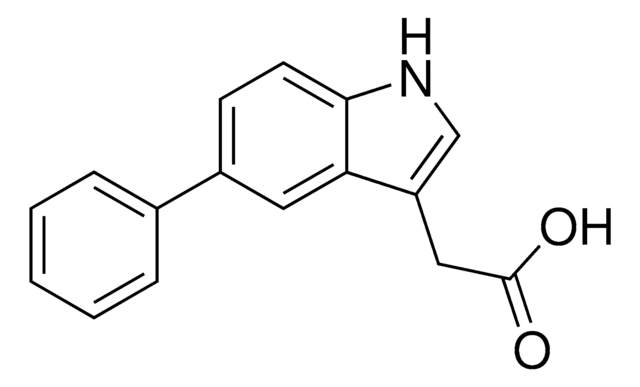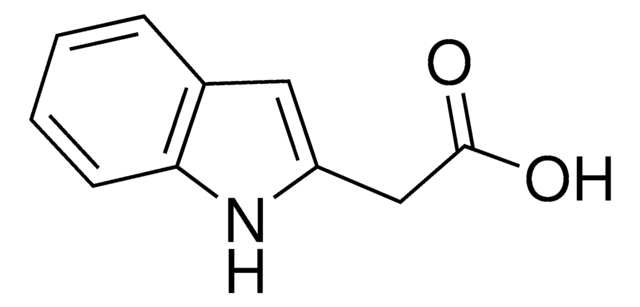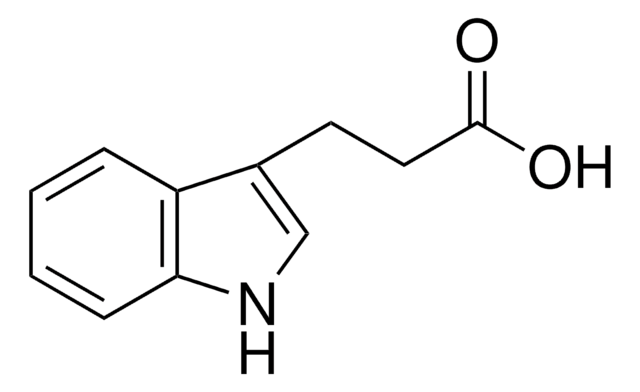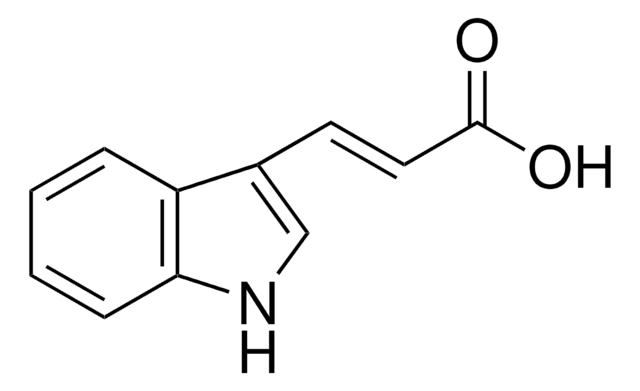I5148
Indol-3-essigsäure Natriumsalz
BioReagent, suitable for plant cell culture, ≥98%
Synonym(e):
Heteroauxin, IAA
About This Item
Empfohlene Produkte
Qualität
for molecular biology
Produktlinie
BioReagent
Assay
≥98%
Form
powder
Methode(n)
cell culture | plant: suitable
Löslichkeit
H2O: soluble
Eignung
suitable for (Plant cell culture)
Anwendung(en)
agriculture
Lagertemp.
2-8°C
SMILES String
[Na+].[O-]C(=O)Cc1c[nH]c2ccccc12
InChI
1S/C10H9NO2.Na/c12-10(13)5-7-6-11-9-4-2-1-3-8(7)9;/h1-4,6,11H,5H2,(H,12,13);/q;+1/p-1
InChIKey
YGSPWCVTJRFZEL-UHFFFAOYSA-M
Allgemeine Beschreibung
Anwendung
- zum Verändern des Wurzelentwicklungsprozesses in Arabidopsis thaliana-Setzlingen
- als Standard bei der Bestimmung von IAA mittels Hochleistungsflüssigkeitschromatografie unter Verwendung von Chlorella sorokiniana- und Azospirillum brasilense-Probenkulturmedien
- als eines der Pflanzenhormone zum Behandeln von interspezifischen Hybriden (Elaeis oleifera Cortés x Elaeis guineensis Jacq.) und zum Untersuchen ihrer Wirkung auf die Fruchtentwicklung von parthenokarpen Früchten und die Ölproduktion in Ölpalmen
- als Zusatz zu Kulturmedien, um den vorzeitigen Ausstieg aus dem Mitose-Arrest („mitotic slippage“) in menschlichen Zelllinien zu induzieren
- als Zusatz in einem Sprossinduktionsmedium (SIM) für die Spross- und Triebverlängerung von Explantaten
Biochem./physiol. Wirkung
Lagerklassenschlüssel
11 - Combustible Solids
WGK
WGK 3
Flammpunkt (°F)
Not applicable
Flammpunkt (°C)
Not applicable
Persönliche Schutzausrüstung
Eyeshields, Gloves, type N95 (US)
Analysenzertifikate (COA)
Suchen Sie nach Analysenzertifikate (COA), indem Sie die Lot-/Chargennummer des Produkts eingeben. Lot- und Chargennummern sind auf dem Produktetikett hinter den Wörtern ‘Lot’ oder ‘Batch’ (Lot oder Charge) zu finden.
Besitzen Sie dieses Produkt bereits?
In der Dokumentenbibliothek finden Sie die Dokumentation zu den Produkten, die Sie kürzlich erworben haben.
Kunden haben sich ebenfalls angesehen
Unser Team von Wissenschaftlern verfügt über Erfahrung in allen Forschungsbereichen einschließlich Life Science, Materialwissenschaften, chemischer Synthese, Chromatographie, Analytik und vielen mehr..
Setzen Sie sich mit dem technischen Dienst in Verbindung.

